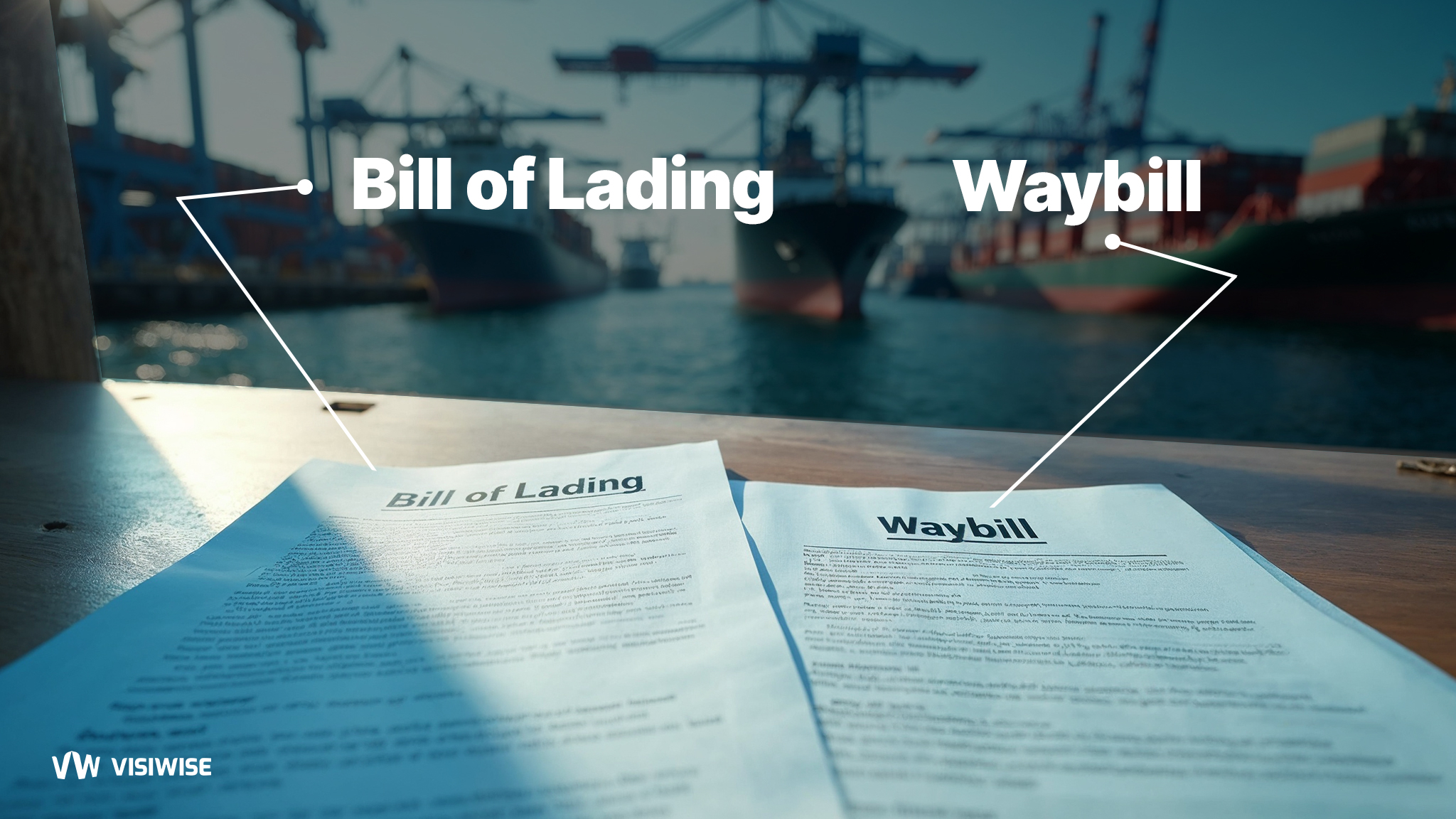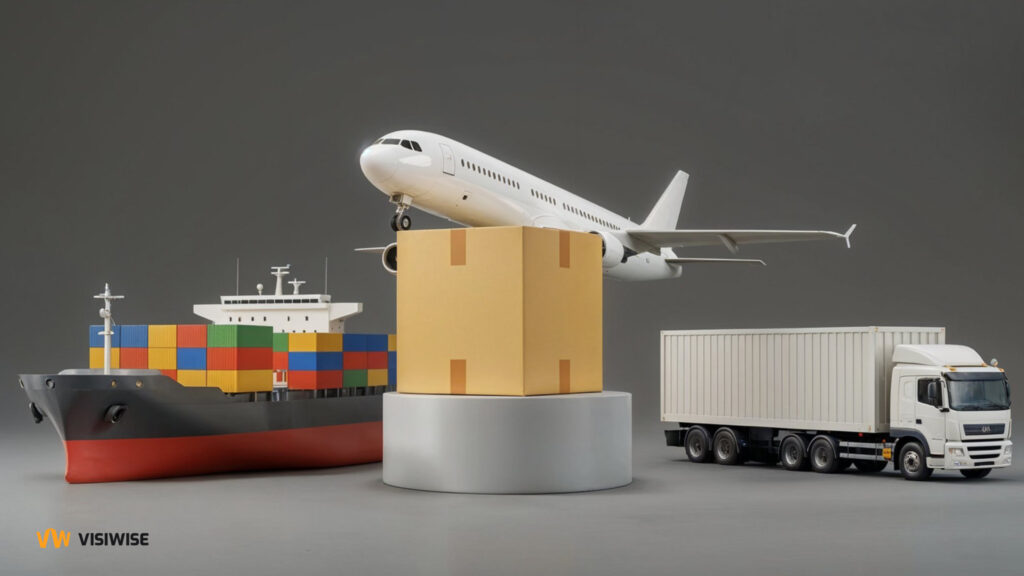Documentation serves as the backbone of the intricate web of global trade and logistics, ensuring the smooth flow of goods from one point to another. The Bill of Lading and the Waybill are essential documents in this realm. Understanding the disparities between these documents is critical for anyone involved in shipping and logistics operations, as both documents serve different purposes and carry distinct legal implications.
Understanding the Bill of Lading
A legal document that a carrier issues to confirm that the goods have been received for shipping is called a Bill of Lading (B/L). It acts as a receipt for the goods, a document of title, and a contract for their transportation. This document outlines the terms of the agreement between the shipper and the carrier, including details about the goods, the destination port, and the conditions of carriage.
Types of Bills of Lading
- Straight Bill of Lading: Issued to a specific consignee and is non-negotiable.
- Order Bill of Lading: Allows for the transfer of ownership of goods to a third party through endorsement.
- Negotiable Bill of Lading: Functions as a document of title, enabling the transfer of goods to another party through endorsement.
Exploring the Waybill
A Waybill is a document that accompanies goods during their transit, providing details about the shipment and its destination. Unlike a Bill of Lading, a Waybill does not serve as a document of title, meaning it does not transfer ownership of the goods. It primarily functions as a receipt for the goods and a contract of carriage.
Types of Waybills
- Air Waybill (AWB): Used in air cargo transportation, providing essential information about the shipment and its handling.
- Sea Waybill: Commonly used in ocean freight and serves as evidence of the contract of carriage and receipt of goods.
Key Differences Between Bill of Lading and Waybill
Understanding the key differences between a Bill of Lading and a Waybill is crucial for navigating the complexities of shipping and logistics:
Legal Status and Function
- The Bill of Lading is a legal document that shows ownership of the goods being shipped, acting as a receipt for the carrier and as a contract for transportation.
- The Waybill is primarily a receipt and contract between the shipping company and the carrier but does not represent ownership of the goods. It’s proof of the transportation agreement without the legal implications of ownership transfer.
Negotiability and Transferability
- A Bill of Lading is often negotiable, meaning it can be endorsed and transferred to another party, which changes ownership of the goods.
- A Waybill is non-negotiable and cannot be transferred. It stays with the carrier and serves as a receipt without changing hands or ownership.
Usage in Different Modes of Transport
- Bills of Lading are commonly used in sea transport but are also utilized in road and rail shipping. They are essential when ownership of the goods needs to be transferred.
- Waybills, such as Air Waybills and Sea Waybills, are used for air and some sea shipments, where there is no need for ownership transfer during transit.
What is the Difference Between a Bill of Lading and a Sea Waybill?
A Bill of Lading is both a receipt and a document of title, enabling the transfer of ownership of goods. It requires the consignee to present the original document for delivery of goods. In contrast, a Sea Waybill is non-negotiable and simplifies logistics as it does not require the physical document to be presented for the consignee to receive the goods.
What Are the Differences Between a Bill of Lading and an Airway Bill?
An Airway Bill (AWB) is used in air freight and serves as a receipt and contract of carriage but is non-negotiable and does not transfer ownership of the goods. Unlike the Bill of Lading, it does not require the presentation of the original document for the release of goods, which expedites the delivery process.
How Are Bill of Lading and Waybill Similar?
Despite their differences, the Bill of Lading and the Waybill share some core similarities:
- Proof of Shipment: Both act as receipts that confirm the goods have been shipped.
- Contract of Carriage: Each outlines the terms of transportation between the shipper and the carrier.
- Goods Description: Both contain key details such as the type, quantity, and destination of the goods.
- Liability Clauses: Both include provisions regarding the carrier’s responsibility for the goods during transit.
Choosing Between a Bill of Lading and a Waybill
When selecting between a Bill of Lading and a Waybill, consider several factors:
- Title Transfer: If ownership transfer is required during shipment, use a Bill of Lading.
- Speed of Delivery: A Waybill is quicker to process since it doesn’t require the original document for goods release.
- International Trade Requirements: For customs clearance and legal compliance, a Bill of Lading may be required in certain jurisdictions, especially for sea freight.
Challenges and Considerations
Managing shipping documents involves ensuring compliance with international regulations to avoid delays and penalties. Accuracy in documentation is essential, and leveraging technology for electronic document management can streamline operations.
The Impact of Digitalization on Shipping Documentation
Digitalization is revolutionizing the shipping industry, enhancing efficiency and security. Electronic Bills of Lading (eB/L) and Electronic Waybills (eAWB) are becoming standard, allowing for faster processing, reduced paperwork, and increased transparency throughout the supply chain. Digital documents are also more secure, reducing the risk of loss or fraud.
Comparison Guide: Bill of Lading vs. Sea Waybill
This checklist provides a quick overview of the differences between a bill of lading and a sea waybill. Please note that it serves as a general guideline, and the choice of document is entirely up to you.
Conclusion
While both the Bill of Lading and the Waybill are essential documents in shipping, they serve different functions. The Bill of Lading facilitates ownership transfer and is used in transactions that require detailed legal documentation. The Waybill is used for simpler, faster shipments where ownership transfer is unnecessary. Understanding these differences ensures smooth logistics and compliance with international trade requirements.



